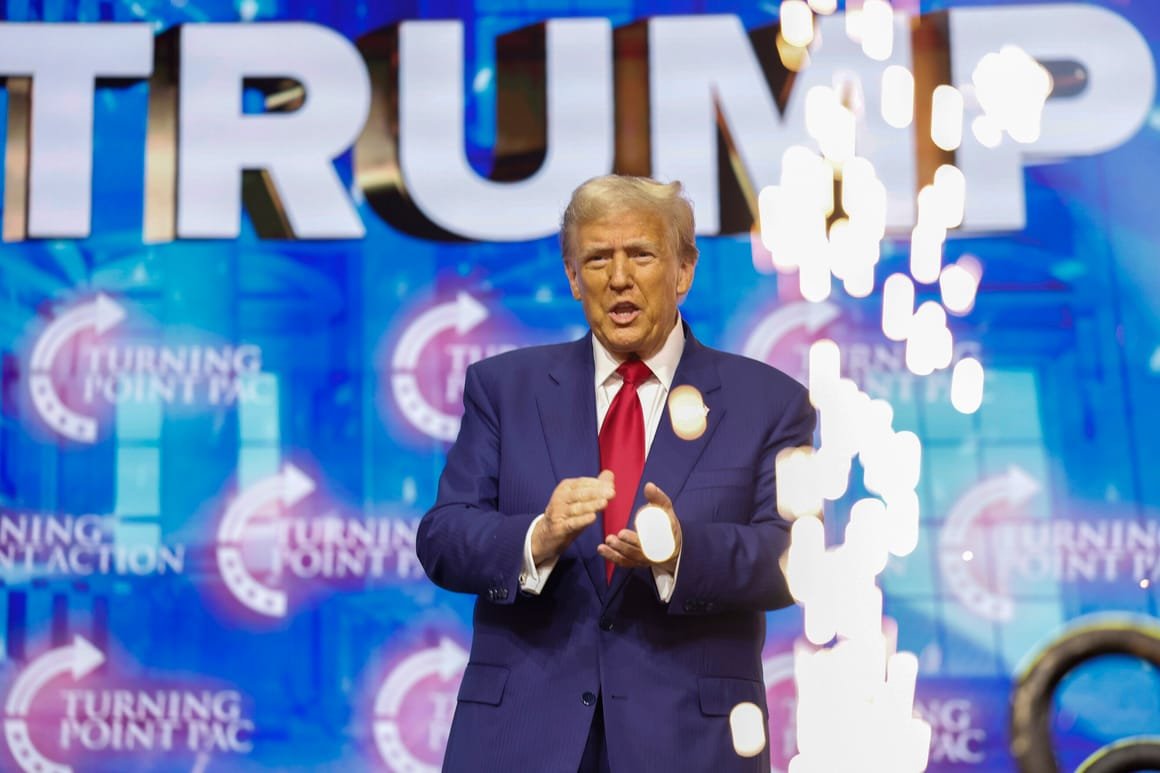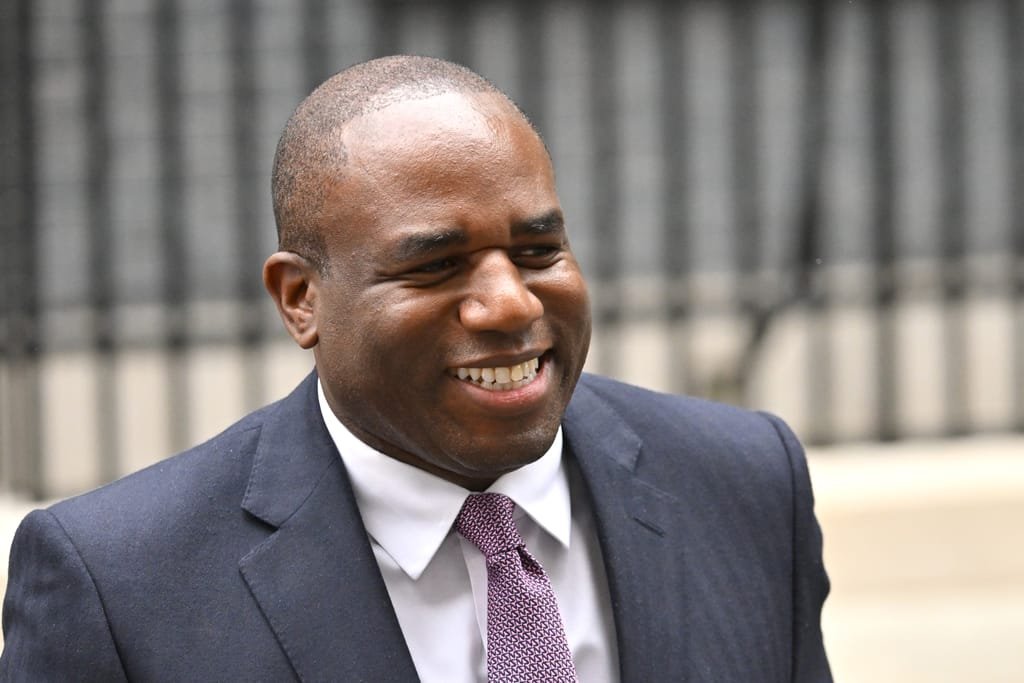Both sides may want it politically, but the U.S. president can’t instantly boost exports and firms don’t necessarily want to “drill, baby, drill.”

BRUSSELS — Donald Trump is promising to flood Europe with gas. That’s a welcome vow for the continent’s ailing industry and officials wanting to quit Russian energy.
A promise is not a guarantee, though.
The United States president-elect, who will be sworn in on Monday, has vowed to “unleash” American energy and “drill, baby, drill” at every chance. In theory, that means more gas Europe can consume.
For manufacturers struggling with high energy bills, that influx could help lower prices. Extra American gas could even provide the supplies needed to let Europe break its remaining energy ties with Russia — an unfulfilled goal almost three years into Moscow’s war in Ukraine.
“In that context,” having more U.S. gas “can be nothing but helpful,” said Joseph Majkut, director of energy and climate at the Center for Strategic and International Studies think tank.
Yet Trump’s boasts omit some inconvenient facts. The soon-to-be president has little power to boost exports in the short term, and potential trade friction between the U.S. and European Union could affect gas supplies. He also can’t simply tell companies what to do — and right now, American firms are not actually too keen to “drill, baby, drill.”
Meanwhile, some in Europe are wary of latching the continent’s energy supply to the American president’s temperament.
“Whatever happens, we need to be extremely careful not to reproduce an overdependence on one country” after Russia, said one EU diplomat who was granted anonymity to speak freely about the sensitive issue. “Anything could happen because of his craziness.”
Markets and personalities aside, political will in both Washington and Brussels seems inclined to at least say the two sides are buying and selling more gas. That’s exactly what they did in 2018, when Trump threatened tariffs and the EU committed to buying more liquid natural gas — even though it didn’t really have that authority.
Now, that dance is beginning again.
Friendly fuel?
Within days of his inauguration, Trump is expected to sign a flurry of executive orders meant to boost energy production.
That’s likely to include lifting a Biden-era ban that froze the approval of new liquefied natural gas projects. A broader energy package to expand oil and gas drilling on federal lands is also in the works.
In his congressional confirmation hearing on Wednesday, Trump’s pick to run the Energy Department, Chris Wright, highlighted LNG expansion as a top priority.
“To compete globally, we must expand energy production, including … liquefied natural gas,” he told lawmakers.
The U.S. is already the EU’s second-largest gas partner and largest LNG supplier, a status it acquired after Russia cut off supplies following its 2022 invasion of Ukraine. So far this month, the bloc has imported over half of its LNG from the U.S., the world’s largest producer of the supercooled fuel.
Now, Trump wants to raise overall fossil fuel production by the equivalent of 3 million oil barrels per day, according to Jim Burkhard, head of energy research at S&P Global — over half of which would likely come from gas.
Energy firms could hit that goal — if they want — by intensifying production from existing sites, Burkhard said. And the president’s new proposals will, at a minimum, “create confidence that demand will continue to grow for natural gas in the United States.”
But beyond that, Trump’s powers to increase production — he could ease rules for new LNG plants, for instance — could take a decade or longer to show results, Burkhard said.
Still, if energy companies do respond to Trump’s rhetoric with greater output, that would provide much-needed relief for Europe’s energy-intensive businesses, which still pay two-to-three times more for gas than their U.S. rivals.
“Energy costs are one of the big competitiveness challenges that we’re facing today,” said Nicolai Romanowski, energy manager at CEFIC, the trade association representing the EU’s chemicals sector, the bloc’s largest single industrial consumer of gas and electricity. The industry has lost around 11 million metric tons of chemical production capacity in Europe in the past two years.
“Anything that alleviates some of the pressure is a boost to the competitiveness of European industry,” he added while noting that prices will still remain higher than for their U.S. rivals given the increased costs of liquefying the gas and transporting it by sea.
At the same time, more U.S. gas could help the EU dislodge its continued dependence on Moscow for supplies.
Though the bloc has slashed its reliance on Moscow by two-thirds since 2022 — a number that dropped further as flows via Ukraine ended this month — it is buying record levels of Russian LNG. EU energy chief Dan Jørgensen will present a plan to tackle the issue next month.
A boom in U.S. volumes “could sharply reduce the share” of the bloc’s imports arriving from Moscow, according to Charles Costerousse, an LNG analyst at the Kpler commodities firm.
Unknown quantity
Much as he might want to, Trump can’t move energy markets alone.
The first obstacle comes from industry. For U.S. fossil fuel firms, any expansion will be “guided by market forces,” said Burkhard, the analyst, and not orders from the White House. And the sector is increasingly focused on profitability rather than expensive new extraction, he added.
“A radical change is unlikely because the vast majority, if not everybody, is focused on the economics of what they’re doing,” Liam Mallon, a top executive at oil and gas major ExxonMobil, said in November. “We’re not going to see anybody in ‘drill, baby, drill’ mode.”
Meanwhile, LNG is likely to play a key role in trade tensions with the incoming administration, with unclear implications for the EU.
Already, Trump has urged the bloc to buy more oil and gas or face a barrage of tariffs — a proposal European Commission President Ursula von der Leyen has welcomed.
There is “a real possibility” this will lead to more American LNG in Europe, Burkhard said.
But such a deal could also prove entirely empty. Facing the threat of tariffs under Trump’s first term in 2018, former Commission chief Jean-Claude Juncker vowed to import more LNG from the U.S. — a promise experts said was largely meaningless given he had no power to deliver on this.
The prospect of more American gas is also raising concerns in the EU on both energy security and climate grounds, as the bloc races to become climate neutral by 2050.
“It is in our interest to tame the threat of tariffs,” said one Commission official. “While the U.S. is set to remain an important gas supplier to the EU, the EU strategy has always been to avoid overreliance on a single source, also in light of our decarbonization objectives.”
That’s a sentiment shared in numerous capitals.
Buying more LNG from Trump’s America creates “a new dependency … [with] a transatlantic partner that’s less reliable than it used to be,” said a second EU diplomat.
“He could use energy for weaponization.”



